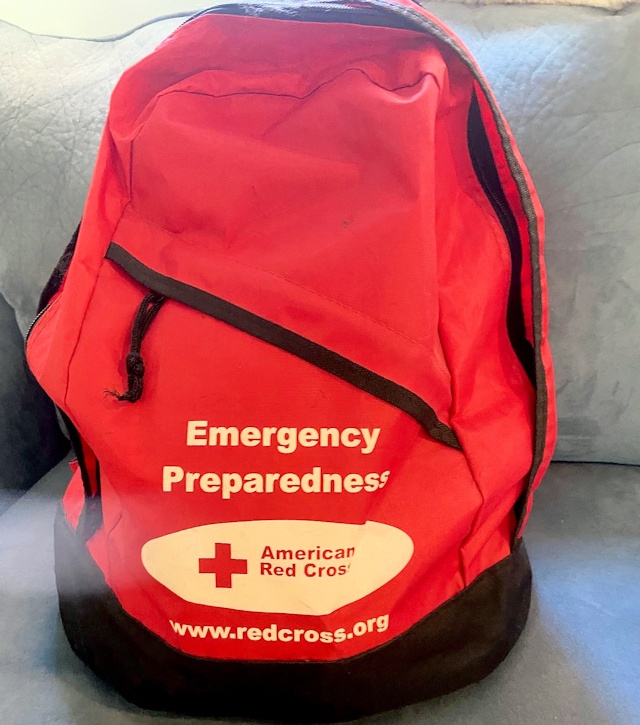
Thirty-five years after the disastrous Loma Prieta earthquake, The San Francisco Chronicle recently published a guide to surviving the next major shaker.
The supplement notes that “[a] key tool for making it through the next big disaster is an emergency survival kit—and you should have more than one. It’s important not only to store one at home, but to keep one in your car, because that’s where you might be when chaos erupts.”
For the car, the gear is best packed tightly into a small backpack, to save space. At home, a basic outdoor garbage can works best for storage.
Here are the essential elements, according to the American Red Cross.
For the car
Water: A three-day supply amounting to 1 gallon per person per day. (For the car kit, you’ll need to keep this outside the backpack in your vehicle’s trunk or cargo area. Because 3 gallons of water can be bulky for the car, some people prefer to store as little as a quart a day, which is bare survival mode. Each quart can be stored in the backpack in small foil packets, available at disaster-supply sites or stores.)
- Food: A three-day supply, about 1,000 calories — something lightweight like energy bars
- Water purification tablets: Or a water filter, in case you go beyond three days and need to find alternate sources of water
- Portable radio
- Flashlight and/or light stick
- Charger for cell phones and devices, powered by batteries, along with a cell phone charger cord for the car
- Batteries
- Blankets: Emergency survival models are compact and light
- Tube tent
- Sanitation and personal hygiene supplies, including toilet paper
- Duct tape
- Work gloves
- First-aid kit
- Sewing kit
- Whistle
- Smoke/dust mask
- Gas meter valve shut-off wrench
- Instant hand warmers
- Leatherman-style multi-tool or pocketknife with can opener, screwdriver heads and knife blade.
- Poncho or other rain gear
- Candles
- Waterproof matches
- 50 feet of rope (3/16-inch or bigger)
For the home
All the previous items plus these:
- Medications: At least a seven-day supply
- Cash: Small-denomination bills and coins
- Tools: Foldable shovel, hatchet, Leatherman-style multi-tool, screwdriver, pliers, pocketknife and can opener
- Extra clothes
- Battery-powered lamp
- Maps of the area
Other items to consider:
- Additional medical supplies (hearing aids, glasses, contacts, syringes, etc.)
- Baby supplies
- Games and toys for children
- Pet supplies
- Two-way radios
- Extra car and house keys
- Scissors
- Sleeping bags
- Plastic sheeting (for emergency shelter)
- Paper or plastic plates, bowls and cutlery
- Small cooking pot
- Soap and bath towels
- Copies of personal documents
- Emergency contact list